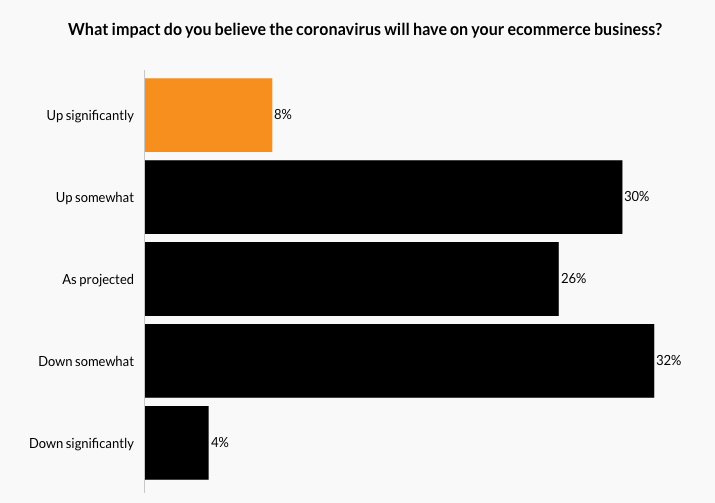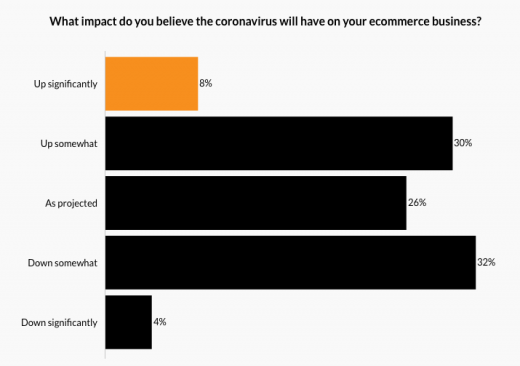Coronavirus and e-commerce: It’s complicated
While online shopping may benefit in the short term, supply chain issues and uncertain consumer demand could dampen the e-commerce outlook.
The assumption that Coronavirus, social distancing and staying home will boost e-commerce is widely held among digital marketing experts. However, early findings suggest the reality will be somewhat more complicated.
Early evidence of increased online sales. Preliminary data from Quantum Metric show that e-commerce associated with selected “Brick and Mortar retailers … saw an average revenue weekly growth rate increase of 52% and an 8.8% increase in conversion rates” compared to a year ago. The company’s findings are based on more than 5 billion U.S. retailer web and mobile site visits between January 1 and February 29.
In Q4 2019, according to U.S. government data, online sales were 11.4% of total retail spending. This year e-commerce is projected to reach 12% or higher, depending on how the virus and its impact on the economy play out.
Pressure on e-commerce too. One bullish scenario argues that consumers will shift more and more purchases online as they avoid public places, with Amazon, delivery services and the online divisions of major retailers (e.g., Target, Walmart) as the biggest beneficiaries. Indeed, foot traffic in shopping malls is down. However, supply chain issues, product shortages and potentially declining consumer demand could also blunt e-commerce growth – if the economy falters or goes into recession.

Mixed outlook and uncertainty among retailers. A survey of 304 retailers conducted by Digital Commerce 360 finds a lot of confusion, uncertainty and a very mixed outlook among retailers. A sizeable minority (38%) expect e-commerce sales to jump somewhat or significantly because of the virus. However, the majority anticipate their e-commerce sales will be flat or decline.
Otherwise, the survey expresses retailer concerns about the supply chain and consumer demand. Asked about what they’re doing to respond to coronavirus, 20% said they’re “taking aggressive action,” 44% said they were “taking some action” with more to come, and the remaining 36% were taking a “wait-and-see approach.”
Why we care. In a recent report, Nielsen projected significant growth of U.S. “omnichannel households” over the next five years. While retailers often see the world through a bifurcated lens (online vs. offline), consumers have been “omnichannel” for a long time: using the internet to make offline purchase decisions. Today, they typically care less about the specific channel — though they prefer local returns — than convenience, price, and service.
While we’ll have to wait and see how much of a shock the coronavirus delivers to the economy, this is not a time for hesitation or a “wait and see” approach. Retailers will need to utilize and leverage all their assets to stimulate and sustain consumer demand — that includes maintaining and even boosting digital marketing efforts for the foreseeable future.
Marketing Land – Internet Marketing News, Strategies & Tips
(16)



